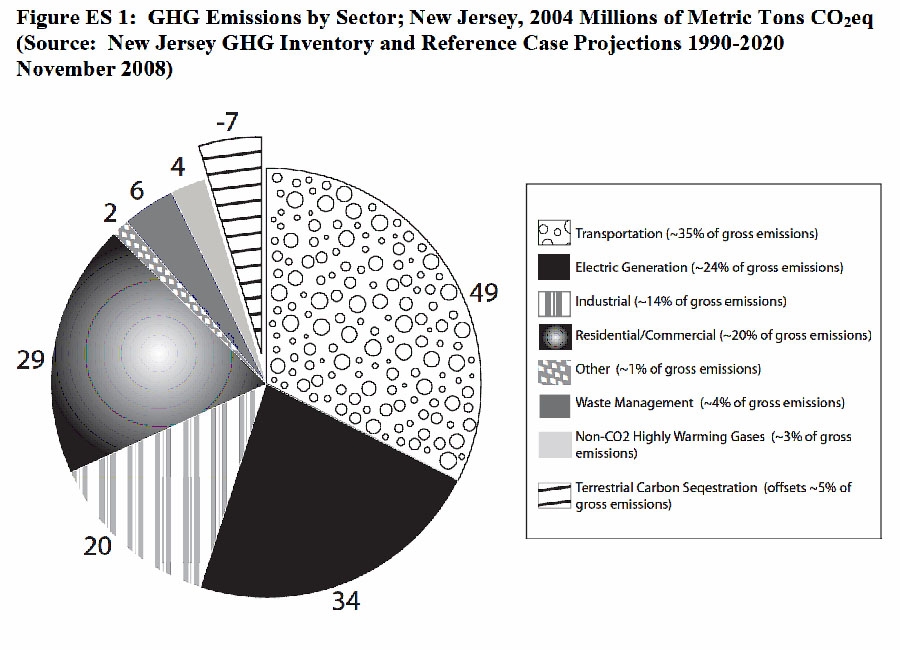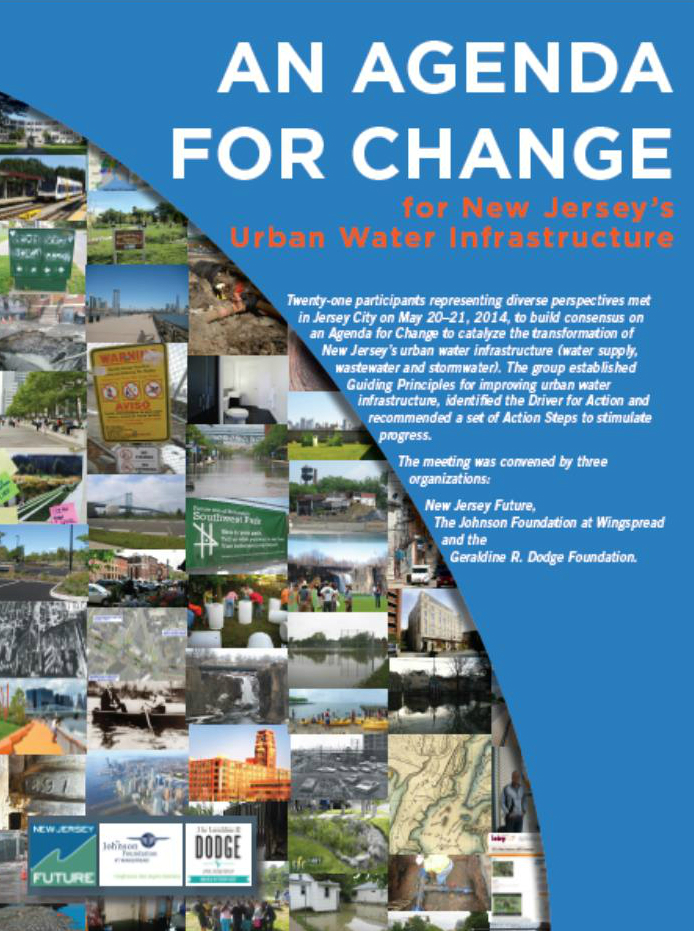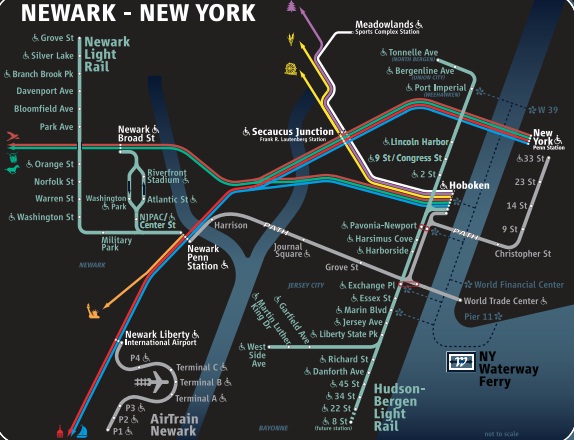New Jersey Future Blog
New Jersey Embraces Smart Growth to Combat Climate Change
December 23rd, 2009 by Jay Corbalis
New Jersey’s final Global Warming Response Act Recommendations Report was just released by the state Department of Environmental Protection one year after its initial draft. The report presents a plan for the state to reach its goal of reducing greenhouse gas emissions to 1990 levels by 2020, while also positioning the state to reach its goal of reducing emissions 80 percent below 2006 levels by 2050. The plan relies on three core strategies– implementation of the state’s energy master plan, adoption of a Low Emission Vehicle program and the Regional Greenhouse Gas Initiative–as well as a list of 22 supporting recommendations to meet the 2020 goal. While the three core strategies are, at best, tangentially related to land use, four of the supporting recommendations specifically address land use, and the plan as a whole embraces the link between land-use patterns, travel behavior and greenhouse gas emissions.
As the report points out, emissions from the transportation sector (which come overwhelmingly from private automobiles) make up the largest share of New Jersey’s carbon footprint, at about 35 percent. While the plan addresses fuel efficiency and fuel composition, it does not shy away from addressing the much thornier, third aspect of transportation emissions–the amount we drive. Indeed, the plan notes that “in order to meet both the 2020 and 2050 limit, New Jersey needs to also turn its attention to other aspects of the transportation sector, namely stabilizing the annual growth in vehicle miles traveled (VMT), and expanding opportunities for New Jerseyeans [sic] to enjoy a high standard of living that is less automobile-dependent.” To that end, several of the plan’s supporting recommendations deal directly with lowering the state’s transportation-related emissions by reducing the need to drive. Specifically, the plan recommends:
- Employing efforts for effectively implementing the State Development and Redevelopment Plan;
- Undertaking cooperative efforts with the State’s Metropolitan Planning Organizations to assist them in incorporating GHG reduction targets into their plans and programs;
- Taking actions at the state level to promote transit-oriented development;
- Exploring changes to the Municipal Land Use Law designed to incorporate the statewide GHG limits into local government master planning;
- Ensuring that the Residential Site Improvement Standards are consistent with the GHG limits;
- Supporting the New Jersey State League of Municipalities’ Sustainable Jersey program;
- Implementing a Complete Streets policy;
- Doubling transit ridership by 2050; and
- Working in partnership with local and regional entities to assess infrastructure capacity of the 113 municipalities that will benefit from the ARC tunnel, as well as those served by PATCO rail lines.
Many of these recommendations come directly from comments submitted to the DEP by New Jersey Future during the creation of the plan, as well as from recommendations made by a coalition of groups, including New Jersey Future, to the governor. And while it is certainly encouraging that the DEP’s plan embraces land-use strategies as an essential part of the state’s overall global warming response effort, the success of these strategies, as always, rests on implementation. For its part, while the DEP may understand and embrace the link between land use and climate change, the agency has relatively little authority over the myriad decisions made every day that together shape land-use patterns in the state. In New Jersey, the tradition of home rule dictates that municipalities, of which there are 566, have ultimate say over what gets built, and in what form. Securing municipal support for more sustainable land-use practices will be critical to the success of the recommendations laid out in the DEP plan.
Implementation could also face a challenging road at the state level. While Governor-elect Chris Christie has expressed support for the basic concepts of smart growth, he also faces a massive budget deficit and a constituency, in both the Legislature and the electorate, for whom global warming has not been a high priority. Though many of the strategies introduced in the plan may ultimately save the state money (obviating costly road expansions, for example, by reducing VMT) or even spur economic growth (i.e., promoting transit-oriented development), the up-front costs needed to implement these measures may prove to be prohibitive in these austere budget times. Getting buy-in from other state agencies, particularly the Department of Transportation and Community Affairs, will also be a challenge for Christie. Still, gaining institutional recognition of the importance of smart growth as a greenhouse gas reduction strategy is a significant first step on the road (and the sidewalk!) toward the smart growth nirvana envisioned by one of the plan’s many sidebars:
“Given a wealth of travel options and changes in land development patterns, New Jersey’s citizens make fewer and shorter trips by car. A greater awareness of the implications of how they travel has led many to eliminate some trips through measures like compressed work weeks and teleconferencing, and to replace some car trips by walking and bicycling. Travel is particularly improved for people who have chosen to live in the numerous locations throughout the state where housing, schools and businesses are clustered together. These centers, created by local ordinances, make providing and maintaining infrastructure more cost effective. They also support transit, shorten or eliminate many auto trips and preserve precious open space. Neighborhood stores like cleaners, delis, and pharmacies are nearby, within a short and safe walk or bicycle trip.”


















[…] the other hand, we have New Jersey Future and other smart-growth groups encouraging the NJ Dept. of Environmental Protection to include strategies aimed at reducing VMT among its recommendations for meeting the […]
[…] strategy for meeting both the state’s 2020 and 2050 GHG reduction goals. The report is especially strong on the connection between transportation and land use, calling for implementation of the State Development and Redevelopment Plan, promotion of […]